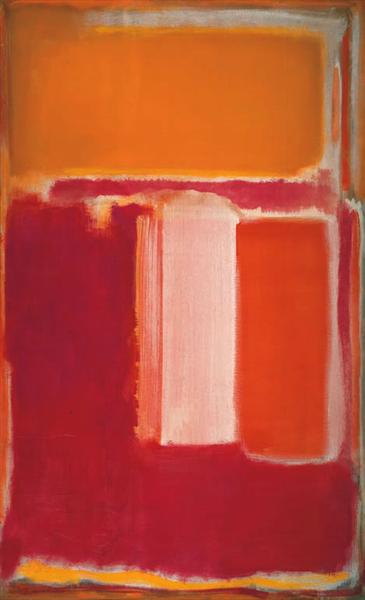1946
Color Field Painting

description
Colour field painting
Colour field painting is an art movement within Abstractionism that appeared in the USA in the middle of the 20th century.
The term belongs to American art critic Clement Greenberg. He is the author of the idea of “flatness of the picture”, which is directly related to the painting of the colour field.
The painting style is popular to this day and is quite simple. This style is a good start for beginners who often “get stuck” in it, not trying to master other, more labour-intensive techniques.
Similar art movements are Painting of Rigid Contours and Abstract Expressionism.
Masters used such media as canvas, board, paper, cardboard, oil, acrylic, electrical tape, etc. The main and only genre is an abstraction.
Key ideas:
– The main task is to study the optical and tactile collaborations of pure complex colours of large planes. These paintings can be divided into two main structures. The first one is a background solution, most often one uniform colour, on which the second “multiform” structure, one or more, is placed. The main object can be both a background and a multiform.
– The use of large planes of uniform colours, most often original, even patented, not centered, close in tone. Large planes have a moderately rough or smooth neighborhood; lines and small objects have stricter outlines.
– On the one hand, looking at the soaring blurry multi-form blocks of this style, the viewer has a feeling of spiritual emptiness; on the other hand, it is an emotional and physical expression of real shapes that does not affect the strict intellectual aspect.
description
One of the first American abstract artists, Clyfford Still was the central figure of the New York School of Abstract Expressionism. The style at the origins of which he stood became the leading art movement in the United States, from the 1940s to the 1960s, until it was supplanted by Pop art and Minimalism that were more positive, understandable to the masses.
November 30, 1904, Grandin, North Dakota (the USA) - June 23, 1980, New York (the USA)
description
Kenneth Noland was an American artist, a bright representative of Colour field painting. He created an alternative to abstract expressionism and action painting, practising strict abstraction, the absence of an object and a subject in art, bright colours evenly applied to the surface of the canvas. Following American artist Helen Frankenthaler, Kenneth Noland began to use acrylic paints, which made it possible to create a thin and saturated coating, eliminating the appearance of random spots and smudges on the canvas surface.
April 10, 1924, Asheville, North Carolina (the USA) - January 5, 2010, Port Clyde, Maine (the USA)
description
The picture from the series “Imaginary Places” was created by Frank Stella based on the book “Dictionary of Imaginary Places” by Alberto Manguel and Gianni Guadalupi. The source was compiled in the form of a guide, but the paintings of the series are not just illustrations for this guide since these compositions are composed, in particular, from the artist’s earlier works.
1998
